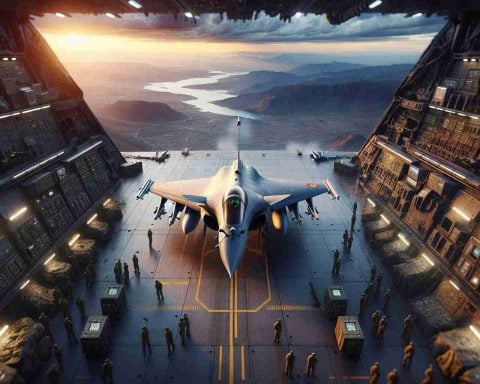The UK has unveiled a major advancement in its next-generation fighter program, the Tempest, with the initiation of flight trials for the Flight Test Aircraft (FTA), known as Excalibur. Based on a Boeing 757 airliner, Excalibur flies as a testing platform for innovative technologies essential to future combat aircraft.
The FTA, described by the Ministry of Defense, Leonardo, and 2Excel, has completed its initial phase of modifications and is already in flight trials. Equipped with newly installed side and belly pods, Excalibur is evaluating the stability and performance of these additions during flight.
These modifications are intended to host sophisticated systems such as the Integrated Sensors, Non-Kinetic Effects (ISANKE), and Integrated Communications Systems (ICS), all crucial components of the UK-led Global Combat Air Program (GCAP). This collaborative effort also involves Italy and Japan, with Tempest being central to the UK’s Future Combat Air System (FCAS) agenda.
Excalibur is currently seen operating from Boscombe Down in Wiltshire, Southern England. While the aircraft is fitted with critical fairings, the cutting-edge demonstration systems are yet to be installed. These systems are anticipated to be aboard by “the next years”, as testing and refinement proceed.
The advanced radar developed under Leonardo’s Multi-Function Radio Frequency System is expected to be key in the finalized aircraft design. Excalibur’s future involves further significant engineering enhancements to ensure robust testing for the eventual deployment of the Tempest fighter by 2035.
The quest for advancing aircraft technology using modified platforms like the Boeing 757 is becoming increasingly popular in global military testing environments. As the UK continues its ambitious timeline, the Tempest program’s success remains reliant on adopting and perfecting these groundbreaking technologies.
Revolution in Combat Aviation: The Tempest’s Technological Leap
The unveiling of the UK’s next-generation Tempest fighter program marks a significant milestone in aviation technology, highlighted by the innovative Flight Test Aircraft (FTA) known as Excalibur. This initiative demonstrates a fascinating blend of cutting-edge research and international collaboration that promises to reshape the future of air combat.
As the modified Boeing 757, Excalibur plays a pivotal role in testing groundbreaking technologies that will define the Tempest fighter jet, set to spearhead the UK’s Future Combat Air System (FCAS) by 2035. Central to this development is the need for integrating advanced systems such as Integrated Sensors, Non-Kinetic Effects (ISANKE), and Integrated Communications Systems (ICS), forming the backbone of the UK-led Global Combat Air Program (GCAP). This collaborative vision also unites Italy and Japan in a strategic effort to revolutionize aerial warfare.
Emerging Trends and Innovations
One of the most remarkable trends in modern military aerospace technology is the adoption of modified commercial airliners like the Boeing 757 as testbeds for new combat systems. This showcases a blend of civilian and military technologies that enables extensive testing without the immediate need for entirely new aircraft designs. The Flight Test Aircraft Excalibur exemplifies this approach by functioning as a dynamic platform to refine new systems and technologies in realistic conditions.
Among the noteworthy innovations in Tempest’s arsenal is the advanced radar being developed under Leonardo’s Multi-Function Radio Frequency System. This radar technology is poised to be a cornerstone of the Tempest’s capabilities, offering unprecedented situational awareness and electronic warfare possibilities.
Technology Integration and Future Predictions
As Excalibur’s flight trials advance, expectations are high for the next phase, which involves the integration of sophisticated fairings and demonstration systems. These developments highlight the ongoing commitment to refining aircraft stability and performance, which are critical to the eventual deployment of Tempest by 2035.
Looking ahead, the global emphasis on such innovative testing techniques is likely to influence future military aviation strategies. The use of modified platforms for testing potentially paves the way for faster development cycles and international collaboration, accelerating the introduction of next-gen technologies in active defense fleets.
Market Analysis and Sustainability
The progression of the Tempest fighter program reflects broader market trends in defense technology. There is increasing interest in sustainable practices, including the potential shift to more energy-efficient system designs. As military forces worldwide demand advanced capabilities, balancing sustainability with top-tier performance remains a key challenge and opportunity for defense contractors.
The partnership among the UK, Italy, and Japan demonstrates a unified commitment to not only develop state-of-the-art combat aircraft but also address global security challenges collectively. This collaboration indicates potential for future developments and shared innovations.
As the Tempest program gains momentum, it represents a monumental stride in aerospace engineering. By leveraging advanced testing platforms and fostering international cooperation, the UK and its allies are charting a path toward unmatched aerial dominance in the coming decades.
For more information on the advancements of the Tempest program and its global implications, visit UK Government.


















